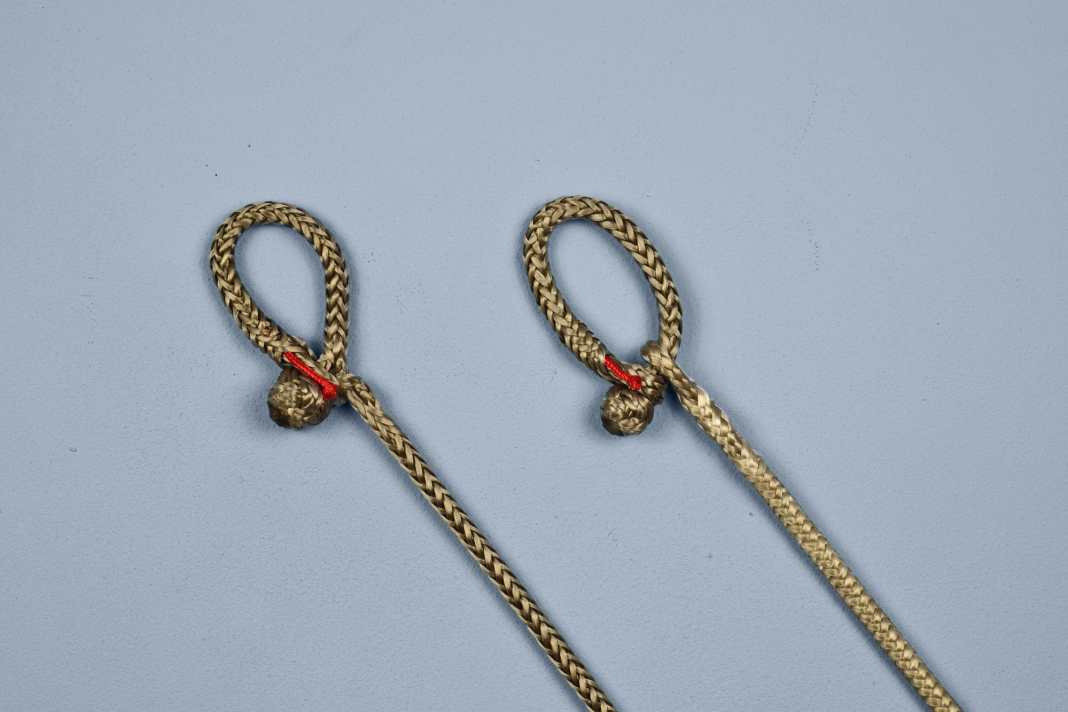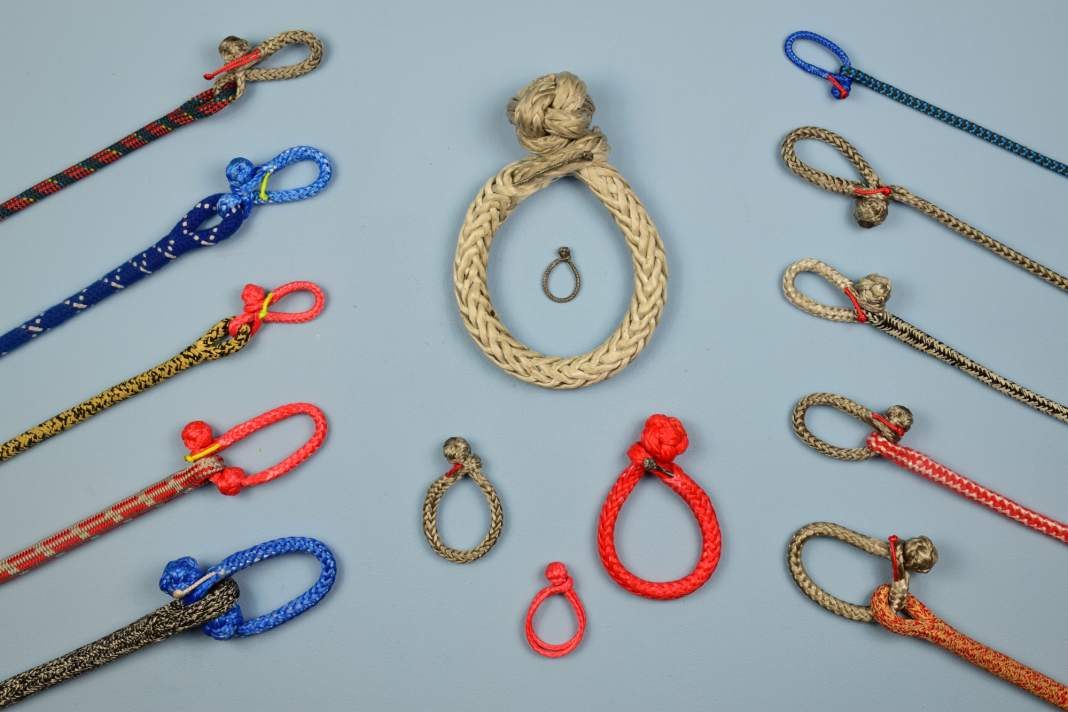Rigging customer: Produce sheet with soft shackle in one - also with cover






There are various solutions for connecting sheets and sails, from simple bowlines to expensive special clews for hooking in. One of the most efficient variants are soft shackles. These lightweight, high-strength connectors are easy to make yourself and do not hit the mast when the sails are being killed. More importantly, they are slim and hardly get caught on the shrouds when tacking.
It is particularly elegant when the sheet and shackle form a single unit. The basic prerequisite for this is the use of cordage with a coated Dyneema core. Only when the fibres are bonded together can the shackle be used permanently without the braid unravelling. Whether the sheet is stripped over the last few metres or the protective cover should extend to the shackle is a matter of taste. The basic splice is identical, only a few additional steps are required for the core-sheathing rigging.
However, the shackle permanently attached to the sheet or halyard also has disadvantages: It cannot be replaced when worn, instead the rope must be shortened by the length of the splice. In addition, the breaking load is somewhat lower than in the classic version with an eye splice.
We show you step by step how to create the elegant connection to the sail in the picture gallery above.
We show you how to make the required diamond knot here:






What are soft shackles/rope shackles?
Easy-to-open connections made of cordage already existed in the days of commercial sailing. Spliced from beaten natural fibre ropes, they could be made quickly and used in many places. However, their breaking load and durability were low, which is why metal shackles ultimately prevailed. With today's high-strength Dyneema braids, however, things look very different. Cordage shackles are ideal for making connections that are even superior to the usual stainless steel shackles.
Thanks to the enormous strength of Dyneema fibres, a rope shackle weighs only a tenth of a comparably strong metal connector. The fibre is very UV-resistant and can withstand sunlight for several years even without a protective coating. Stainless steel only has an advantage when it comes to abrasion resistance.
Rope shackles, also known as soft shackles, are characterised above all by their ease of use in everyday life on board. As the soft shackle contracts more and more under load, it closes securely and does not come loose by itself even when the sails are flapping. When released, however, the rope shackles can be pulled open with bare fingers at any time, and in an emergency the connection can be severed at lightning speed with the on-board knife, even under load. Replacements are inexpensive and easy to make yourself.
Possible applications for rope shackles:
- Attaching sheets, halyards or blocks
- Mobile lashing cleat on the foot rail
- Support rider made from shackles modified with webbing
- Many other individual application options
